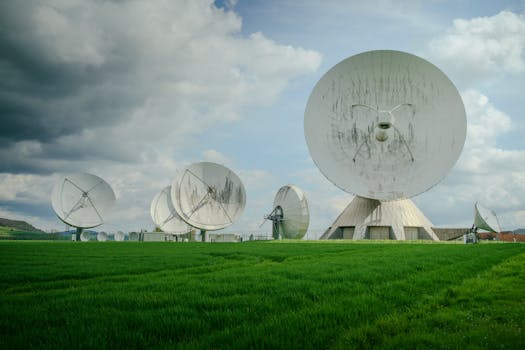LEO Satellites: Revolutionizing Global Connectivity with WordPress

LEO Satellites: Revolutionizing Global Connectivity with WordPress
LEO satellites, or Low Earth Orbit satellites, are a type of satellite that orbits the Earth at an altitude of around 160 to 2,000 kilometers. These satellites have been gaining popularity in recent years due to their ability to provide high-speed, low-latency internet connectivity to remote and underserved areas. With the help of WordPress, LEO satellites are now being used to revolutionize global connectivity and transform the way we communicate and access information.
One of the key benefits of LEO satellites is their ability to provide internet connectivity to areas where traditional fiber-optic cables cannot reach. This is particularly important for remote and rural communities, where access to information and communication services is often limited. By using LEO satellites, these communities can now access the internet and communicate with the rest of the world, bridging the digital divide and opening up new opportunities for economic development and social progress.
The Role of WordPress in LEO Satellites

WordPress is playing a crucial role in the development and deployment of LEO satellites. Many of the companies involved in the LEO satellite industry, such as SpaceX and OneWeb, are using WordPress to build their websites and manage their online presence. WordPress provides a flexible and scalable platform for these companies to showcase their services and provide updates on their progress.
In addition to its use in website development, WordPress is also being used to power the ground stations that control and communicate with LEO satellites. These ground stations use WordPress to manage the flow of data between the satellites and the internet, ensuring that the satellites are operating efficiently and effectively.
Benefits of LEO Satellites

LEO satellites have several benefits that make them an attractive option for providing global connectivity. Some of the key benefits include:
High-speed internet connectivity: LEO satellites can provide internet speeds of up to 1 Gbps, making them ideal for applications that require high-bandwidth, such as video streaming and online gaming.
Low latency: LEO satellites have a latency of around 20-30 milliseconds, which is significantly lower than the latency of traditional geostationary satellites. This makes them suitable for real-time applications, such as voice and video conferencing.
Global coverage: LEO satellites can provide coverage to the entire globe, including remote and underserved areas. This makes them an ideal option for providing global connectivity and bridging the digital divide.
Challenges and Limitations

While LEO satellites have the potential to revolutionize global connectivity, there are several challenges and limitations that need to be addressed. Some of the key challenges include:
Interference: LEO satellites can interfere with other satellite systems and wireless communications, which can impact their performance and reliability.
Space debris: The launch of thousands of LEO satellites can contribute to the growing problem of space debris, which can pose a risk to other satellites and spacecraft.
Regulatory frameworks: The regulatory frameworks governing the use of LEO satellites are still evolving and need to be clarified to ensure that these satellites are used in a safe and responsible manner.
Conclusion

In conclusion, LEO satellites are transforming the way we communicate and access information, and WordPress is at the forefront of this revolution. With their ability to provide high-speed, low-latency internet connectivity to remote and underserved areas, LEO satellites have the potential to bridge the digital divide and open up new opportunities for economic development and social progress. However, there are several challenges and limitations that need to be addressed, including interference, space debris, and regulatory frameworks. As the use of LEO satellites continues to evolve, it is likely that we will see significant advancements in global connectivity and the development of new technologies and applications.
See more:





